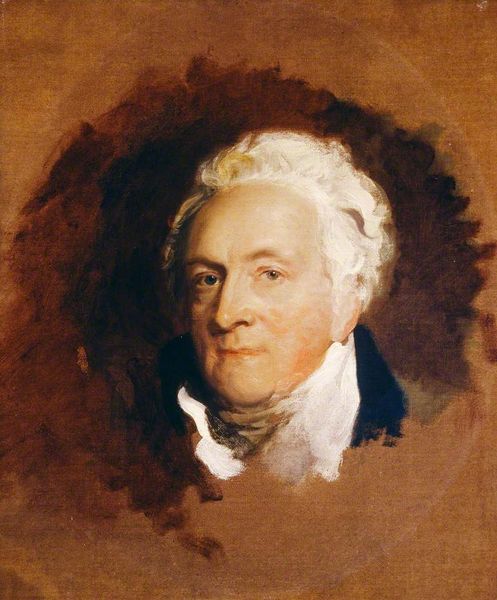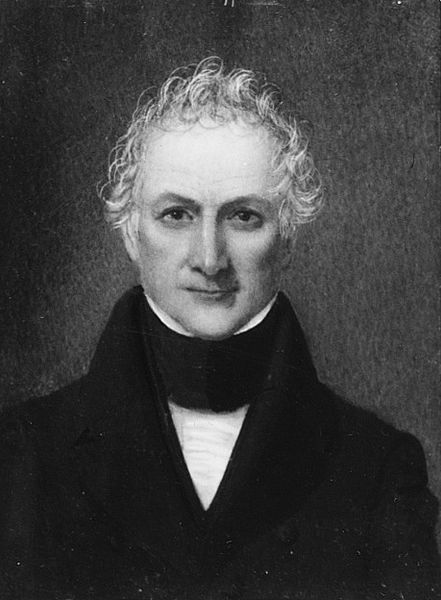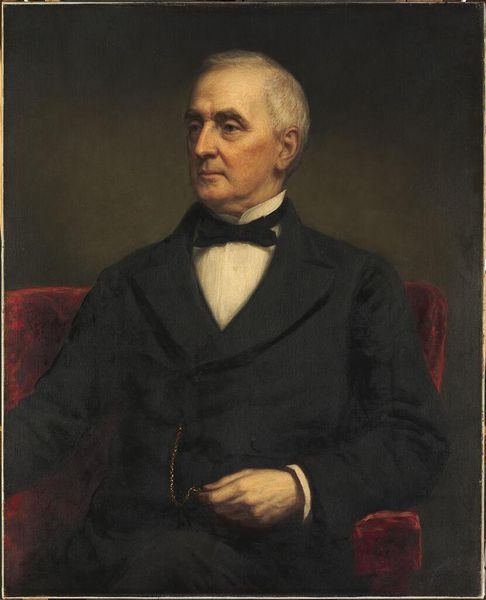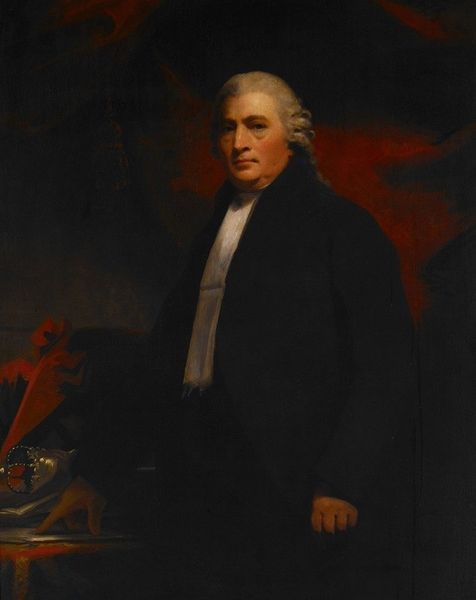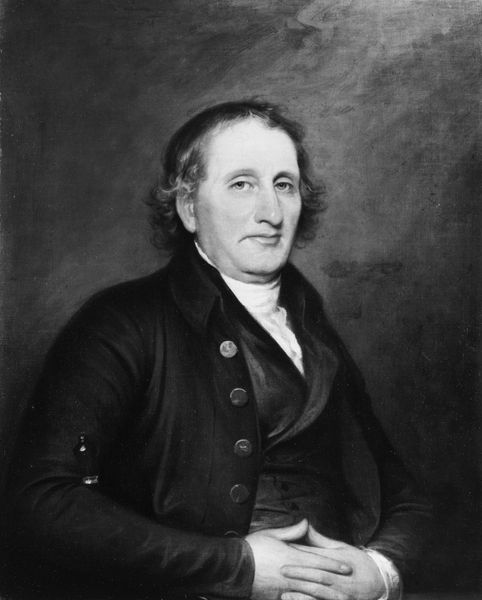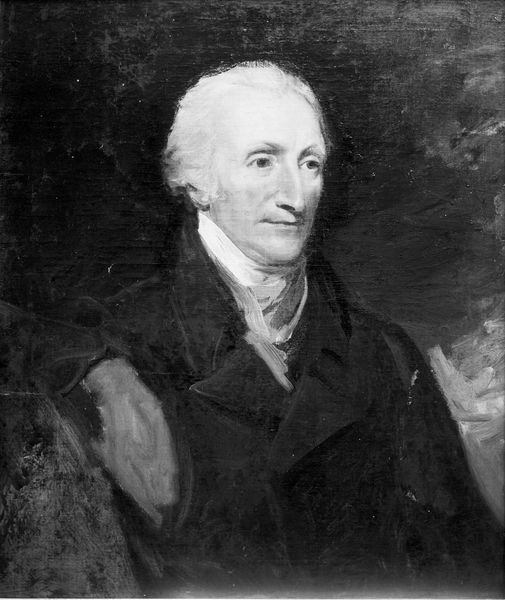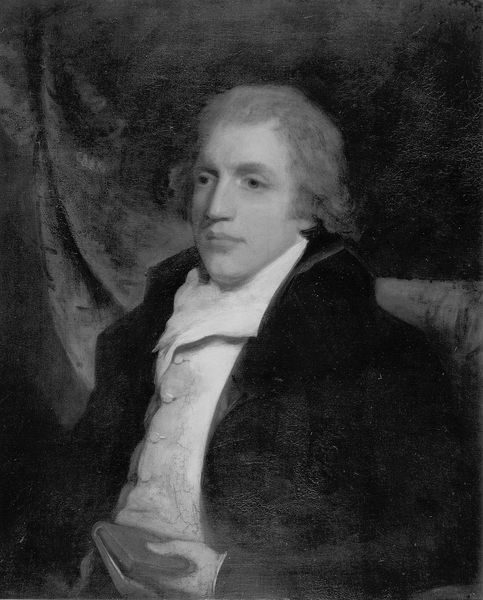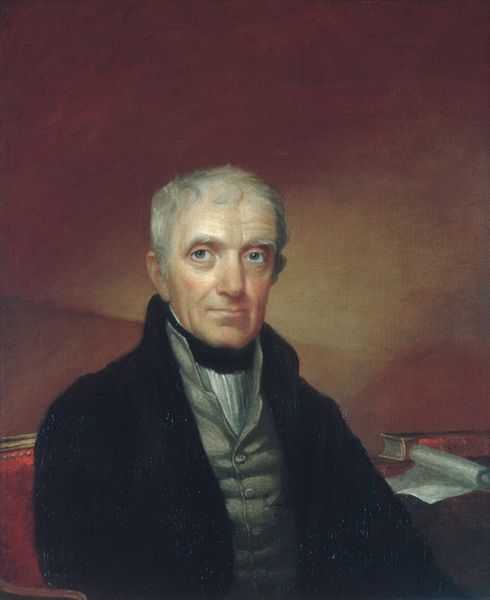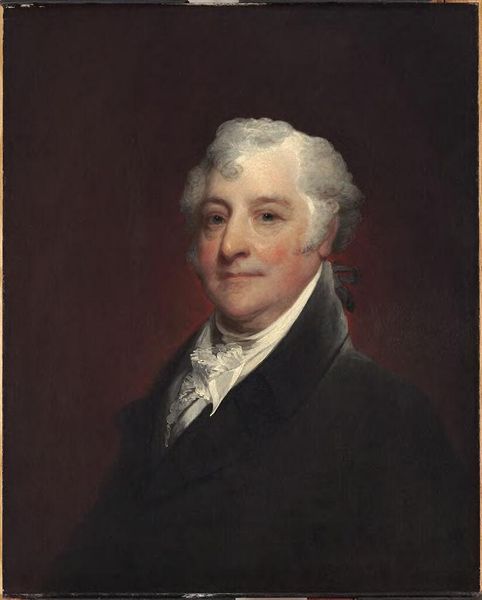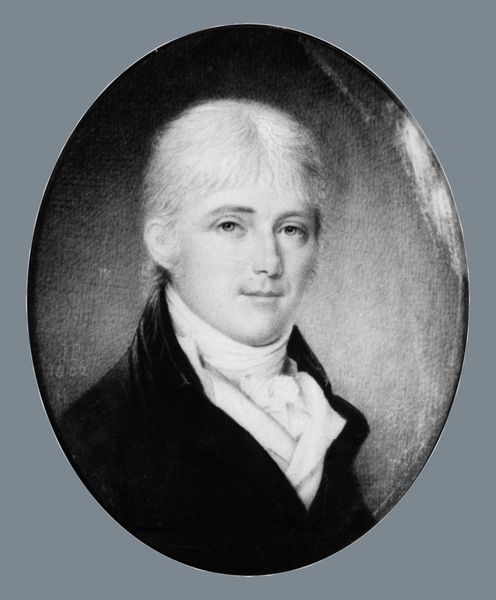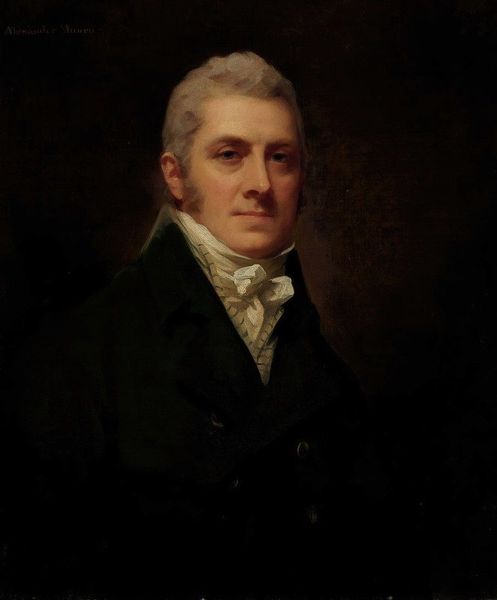
painting
#
portrait
#
portrait
#
painting
#
romanticism
#
academic-art
#
realism
Dimensions: 36 x 28 in. (91.4 x 71.1 cm)
Copyright: Public Domain
Editor: Here we have Charles Harding's portrait of Stephen Van Rensselaer, painted between 1825 and 1828. It's a pretty formal painting, with lots of dark tones, and Rensselaer seems like he's posing very deliberately. What do you make of it? Curator: This portrait speaks volumes about power, class, and the construction of identity in early 19th-century America. Look at how Harding positions Van Rensselaer—seated, hand placed purposefully. It's not just a likeness; it’s a carefully crafted statement. But what kind of statement? Editor: Well, he definitely looks important and affluent, but in a serious, almost severe way. Curator: Exactly. Think about the context. The Van Rensselaer family held immense social and political sway in New York. Paintings like these weren't simply about capturing a likeness. They were tools used to solidify social hierarchies and legitimize power. Consider what it means to commission and display such a work when land ownership was becoming a critical source of power and privilege, intertwined with systemic inequalities. Does knowing that shift how you perceive this painting? Editor: I suppose it does. The portrait now seems less like a simple depiction and more like a symbol of that existing structure of power. Was Harding aware of all these implications, do you think? Curator: Undoubtedly. Portrait artists in this period were keen observers of social dynamics. They knew exactly what they were doing in shaping perceptions and reinforcing norms. And more importantly, Harding himself was also negotiating his own position within this hierarchy through this work, earning patronage through skillful visual assertions of status. Editor: So it's less about the individual and more about the systems they represent? Curator: Precisely. This painting becomes a document that speaks to complex social, economic, and political landscapes, even today. Editor: I see that now; it's definitely made me rethink the whole portrait. Curator: Excellent. Questioning and contextualizing—that’s the key to unlocking these layers of meaning.
Comments
No comments
Be the first to comment and join the conversation on the ultimate creative platform.
